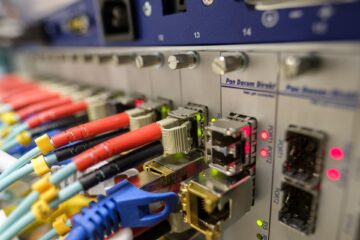AI-Powered Malware
AI-powered malware is fast becoming a major threat in the cybersecurity landscape, utilizing artificial intelligence and machine learning techniques to enhance the capabilities of malicious software. Unlike traditional malware, which follows predefined patterns and rules, AI-driven malware is adaptive, capable of learning from its environment, and evolving its attack strategies in real time. Here’s a detailed explanation of AI-powered malware, its characteristics, and how it poses a serious security risk:
What is AI-Powered Malware?
AI-powered malware refers to malicious software that uses artificial intelligence (AI) and machine learning (ML) algorithms to enhance its functionality, making it more sophisticated, dynamic, and harder to detect by traditional security defenses. This type of malware can learn from previous attacks, adapt to changing environments, and even mimic legitimate software behavior to evade detection.
While traditional malware relies on fixed patterns or signatures, AI-powered malware can analyze and understand its environment, making it capable of launching more complex and targeted attacks at your systems. We encourage businesses to align with our managed services which monitors 24/7 all system on the network.

Defending Against AI-Powered Malware
- AI-Based Defense Systems
- To combat AI-driven malware, cybersecurity companies like Bitdefender are developing AI-powered defenses that can proactively detect and mitigate evolving threats. These systems use machine learning algorithms to analyze patterns and behaviors across large datasets, enabling faster and more accurate identification of new malware variants. This type of software coupled with our Managed Services Agents, monitors systems 24/7 and based on its findings will blacklist any suspicious behavior protecting business information before the user even knows.
- Behavioral Analysis
- Traditional signature-based antivirus software is insufficient against AI-powered malware. Instead, behavioral analysis techniques that monitor system and network activity for suspicious patterns are essential. AI-based behavioral monitoring tools can help detect previously unknown or polymorphic malware by analyzing abnormal behavior.
- Zero Trust Architecture
- Implementing a Zero Trust security model is essential in defending against AI-powered threats. This model assumes that no user or system is trusted by default and continuously verifies trustworthiness, even within the network perimeter.
- Regular Software Updates and Patch Management
- Vulnerability management plays a key role in reducing the attack surface. Regular software updates and timely patching are crucial to fix known vulnerabilities that AI-powered malware could exploit. Our managed service agents takes care of all system updates and security.
- AI-Driven Threat Intelligence
- Using AI-powered threat intelligence platforms can help organizations stay ahead of evolving cyber threats. These platforms can analyze global attack patterns, predict emerging threats, and provide actionable insights to strengthen defenses.
Conclusion:
AI-powered malware represents the next frontier of cyber threats, leveraging machine learning and artificial intelligence to create adaptive, stealthy, and highly effective attacks. Its ability to learn from its environment, evade detection, and evolve means that traditional security measures may no longer be enough. Defending against these advanced threats requires a proactive, AI-enhanced defense strategy, combining behavioral analysis, AI-powered security tools, and continuous monitoring to stay one step ahead of the attackers.
If you require more information on AI Threat protection
